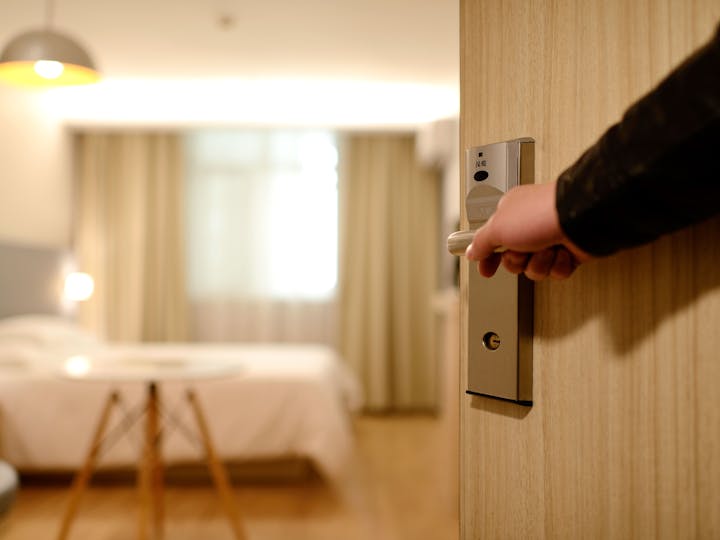Hoteliers have always priced with an eye on the weather, events, and gut feel. But gut feel doesn’t scale, and it often leaves money on the table, especially when demand shifts by the hour and distribution is spread across your website, OTAs, and corporate portals. PMS-powered dynamic pricing closes that gap. Instead of spreadsheets and midnight edits, your property management system becomes the real-time conductor: it “knows” live inventory and stay patterns, feeds a pricing brain (rules-based or RMS), pushes clean rates and restrictions to every channel, and records the results on folios without friction. Done right, this doesn’t mean “surge pricing at any cost.” It means fair rates that reflect demand and full rooms achieved without panic discounts or last-minute chaos.
Dynamic pricing only works when the plumbing is sound. If rate updates lag, channels disagree, or housekeeping status doesn’t sync, you’ll end up apologizing at the desk while your intended price flashes past on a distant screen. That’s why practical hoteliers talk less about algorithms and more about PMS fundamentals: pooled inventory, precise rate mapping, event-driven updates, and guardrails that protect guest trust. In other words, the most innovative revenue strategy is the one your systems can execute instantly, everywhere you sell.
What “PMS-powered” actually means
When pricing is “PMS-powered,” the PMS is the source of operational truth, not an afterthought. It holds your inventory, reservations, folios, room status, and entitlements. The pricing brain, whether a native rules engine or a connected Revenue Management System (RMS) subscribes to that truth, reacts to demand signals, and returns a new rate or restriction set. The PMS then publishes those changes in real time to your booking engine, metasearch feeds, and channel manager. Guests see the exact price wherever they shop; staff never have to reconcile “yesterday’s” numbers with “today’s” reality.
Think of it as a loop with four parts:
- Sense: PMS provides live occupancy, pace, pickup, and availability by date/room type; external signals (events, flights, weather) feed in.
- Decide: A rules engine or RMS applies elasticity, competitor context, and your brand posture (value, premium, or yield-max).
- Act: PMS updates BAR, derived rates, and restrictions (LOS, CTA/CTD), and publishes to all channels.
- Learn: Actuals flow back to the pricing brain; the next decision improves.
If any one of these pieces is missing, dynamic pricing turns into manual pricing with fancier charts. If they all fire, you see cleaner parity, higher conversion under compression, and fewer “fire sale” discounts on soft nights.
The signals that matter (and the ones that don’t)
You don’t need every data source under the sun. You need the right mix that respects how travelers actually book your property.
Internal signals:
- On-the-books (OTB) by day and room type, pickup since yesterday, and booking window.
- Segments (direct vs OTA; negotiated vs retail) and their historical elasticity.
- Housekeeping capacity and engineered turns affect your ability to sell late check-outs or early check-ins.
- Cancellation velocity spikes that predict day-before gaps.
External signals:
- Event calendars and venue schedules that consistently move your market.
- Flight arrivals/disruptions for airport or CBD properties.
- Weather swings that drive short-lead leisure (sun weekends, snow getaways).
- Competitor posture (price and restrictions), watched as a trend, not a twitch.
Ignore vanity metrics that don’t change your decisions. If a signal never alters your rate or restriction, it’s noise.
Guardrails define “fair” (and protect your brand)
Dynamic pricing thrives on rules that reflect your promise to guests and the realities of operations:
- Floors and ceilings by date and room type, respecting brand positioning and seasonality.
- Rate fences that differentiate loyalty members, advance purchase, and refundable offers without cannibalizing BAR.
- LOS controls for high-demand weekends (two- or three-night minimums) that protect shoulder nights from getting stranded.
- Last-room premiums and room-class differentials remain consistent, even as the base rate changes.
- Inventory-aware upsells (e.g., late check-out, view upgrade) are priced against housekeeping load and remaining sellable hours.
A fair pricing system is transparent to staff and predictable to guests. If the same guest, on the same device, sees wild swings within minutes without an apparent reason, trust erodes. Use dynamic pricing to signal value, not to surprise.
Real-time distribution: the “everywhere” part
You can’t claim fair, dynamic rates if the market sees yesterday’s price. This is where event-driven sync matters. When the PMS publishes a rate change or restriction, your:
- The booking engine must reflect it immediately (no caching purgatory).
- Channel manager must fan it out, prioritizing low-stock room types and compressed dates.
- Content mapping must keep room names, inclusions, and taxes consistent; otherwise, you’ll lose conversion on confusion alone.
A pooled inventory model is non-negotiable: one count per room type, shared across all channels. Allotments and manual “stop sells” invite oversells and dead stock. If your tech cannot confidently sell the “last Loft Queen” across channels without double-booking, fix that plumbing before chasing price sophistication.
Dynamic pricing tactics that work for small and mid-size hotels
You don’t need a PhD to see results. Start with simple, auditable moves:
- Lead-time ladders: As occupancy tightens inside your typical booking window, apply controlled lifts; loosen earlier if pace is soft.
- Day-of-week shaping: Leisure skews Friday–Saturday; corporate skews Monday–Thursday. Align floors/ceilings and LOS to known patterns.
- Event triggers: For key venue dates, set guardrails that ratchet rates upward as pickup crosses thresholds, no last-minute scramble.
- Derived rates: Tie packages and member rates to BAR as a % delta. When BAR moves, derivatives follow automatically, with no hand edits or mismatches.
- Time-based add-ons: Price early check-in/late check-out dynamically based on housekeeping capacity and predicted arrivals.
Pair each tactic with a simple “why it changed” note in your pricing log. Revenue meetings stay focused and confident when changes are explainable.
Team operations: give front desk and housekeeping superpowers
Dynamic pricing must reduce chaos, not add it. Two operational handshakes matter most:
- Housekeeping ↔ PMS: Checkouts create clean tasks, completions set rooms to “inspected,” and availability flips to sellable. Real-time status gives revenue permission to push last-minute rates and upsells.
- Front desk ↔ PMS: Entitlements (tier perks, paid upgrades, late check-outs) appear on the reservation timeline with clear fulfillment rules. Agents never guess; guests see consistency.
The cultural shift is small but mighty: staff stop firefighting parity gaps or awkward billing fixes and start having better guest conversations.
Measurement that boards and GMs actually care about
Go beyond ADR vanity. Track indicators that prove dynamic pricing is doing real work:
- Uplift capture rate: percentage of price changes visible across all channels within two minutes.
- Parity incident rate: mismatches per 1,000 checks across top channels.
- Compression night ADR lift: delta vs. prior comparable periods on high-demand dates.
- Shoulder night occupancy and RevPAR: proof you didn’t strand Tuesday to save Saturday.
- Exception volume: oversells, refunds due to mapping/sync errors, and rate explanation escalations.
- Ancillary attach: acceptance rate for late check-out and upgrades tied to dynamic inventory.
When these move in the right direction, GOPPAR follows.
Implementation playbook (8 weeks, low drama)
Weeks 1–2: Map and clean
- Choose the PMS as the single source of truth for inventory and rates.
- Standardize room names and inclusions; fix brittle mappings that cause ghost products.
- Define floors/ceilings, fences, and LOS policies by season.
Weeks 3–4: Wire real-time
- Enable event/webhook updates from PMS to the booking engine and channel manager.
- Run “pressure tests”: lift BAR 5–10% on a sample date; confirm near-instant parity on site and OTAs.
Weeks 5–6: Launch rules with guardrails
- Begin by utilizing lead-time ladders and event triggers, and then implement derived rates for packages/members.
- Turn on inventory-aware upsells (late check-out, room-class upgrades).
Weeks 7–8: Train, monitor, iterate
- Provide role-based quick guides for the front desk and housekeeping.
- Track KPIs (above), fix exceptions quickly, and publish a weekly “wins & learnings” digest.
Expect quick wins on compressed dates and fewer emergency discounts on soft nights.
Competitive evaluation: proof over pitch
Whether you’re reviewing all-in-one suites or pairing a PMS with a specialized RMS, insist on a pilot that reproduces your busiest weekend and your softest Tuesday. Script the repricing waves, the last-room cases, and the housekeeping turns. Measure time-to-parity, mapping accuracy, and exception rates. If you’re exploring market options, a starting point for comparative research is Prostay PMS vs hotel software competitors. Use it as a springboard to outline the exact proof points you’ll demand in your own test (update latency, derived-rate integrity, pooled inventory behavior, and folio clarity after upsells).
Ethics and guest trust
Dynamic pricing is not a license to confuse or gouge. Frame offers and changes in ways guests perceive as value, not volatility:
- Display clear inclusions and tax treatment; keep names and photos consistent across channels.
- Avoid offering cheaper “bundles” than the base rate without explanation; it erodes confidence.
- Respect regional consumer protection norms and card authentication requirements; make refunds and adjustments easy to understand.
- Use loyalty fences to reward direct bookers and frequent guests without degrading public price integrity.
In travel, trust travels. When pricing feels sensible and service feels effortless, guests don’t go searching for reasons to book elsewhere.
A day-in-the-life (how it feels when it works)
10:00 AM: A high-profile event announces late ticket releases. Pickup accelerates; the RMS suggests a measured lift. PMS publishes in seconds; booking engine and OTAs align.
2:00 PM: Two cancellations reopen a view room for tonight. PMS flips status; a last-minute upgrade offer appears on mobile check-in for a member arriving in three hours. They accept; folio lines are correct, housekeeping reprioritizes the clean, and keys are ready.
7:30 PM: A storm delays inbound flights. Your pricing guardrails ease late check-out rates for tomorrow, supported by housekeeping capacity. Guests say yes; tomorrow’s departures are staggered gracefully.
Midnight audit: No parity tickets, no oversells, ADR higher than last week, and a queue that never formed.
No fireworks, just a hotel that kept its promises at speed.
The bottom line
“Fair rates and full rooms” is not a slogan. It’s a system outcome that your PMS can orchestrate when pricing, distribution, housekeeping, and payments are synchronized to the second. Start with a pooled inventory and reliable mapping so you sell each room exactly once. Add a rules-based or RMS brain with guardrails that reflect your brand, wire event-driven updates so your prices and restrictions appear everywhere at the same time. Train your team to trust what they see in the PMS, and measure results that matter to both guests and finance.
Dynamic pricing didn’t make your hospitality better; you did. But PMS-powered execution makes that hospitality easier to deliver and more profitable to scale. When the plumbing is correct, strategy becomes revenue, promises become reviews, and full rooms feel like the natural state of your hotel, not a lucky break.



